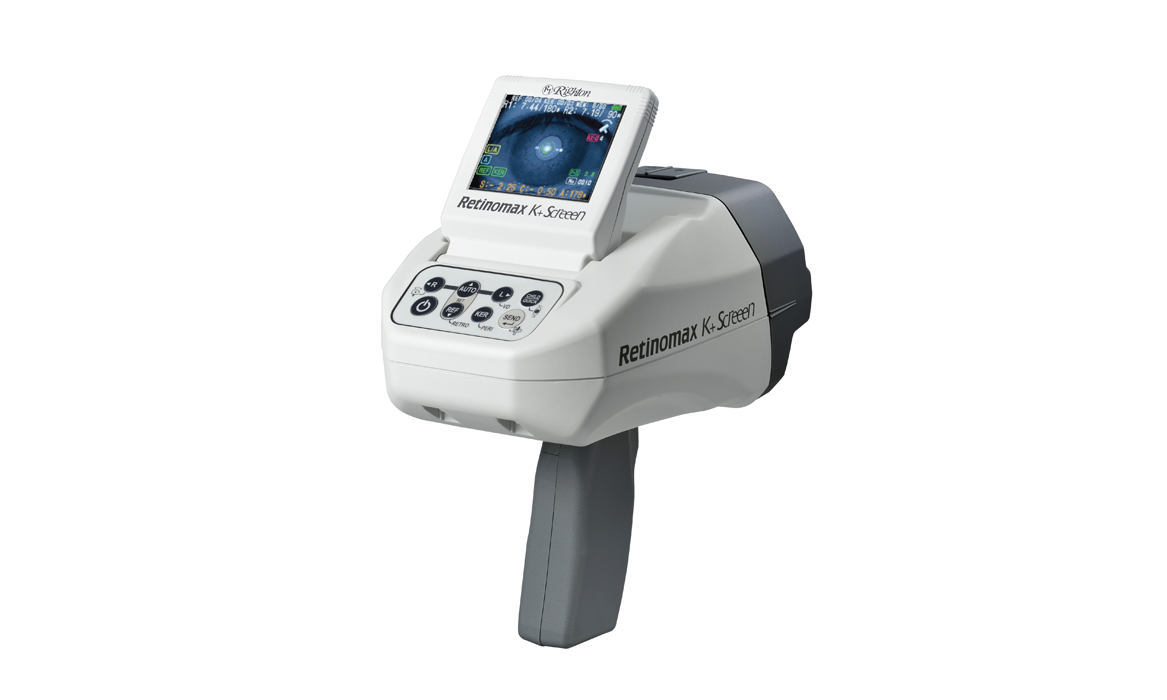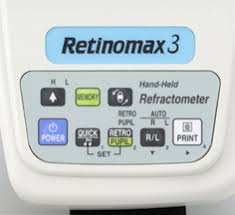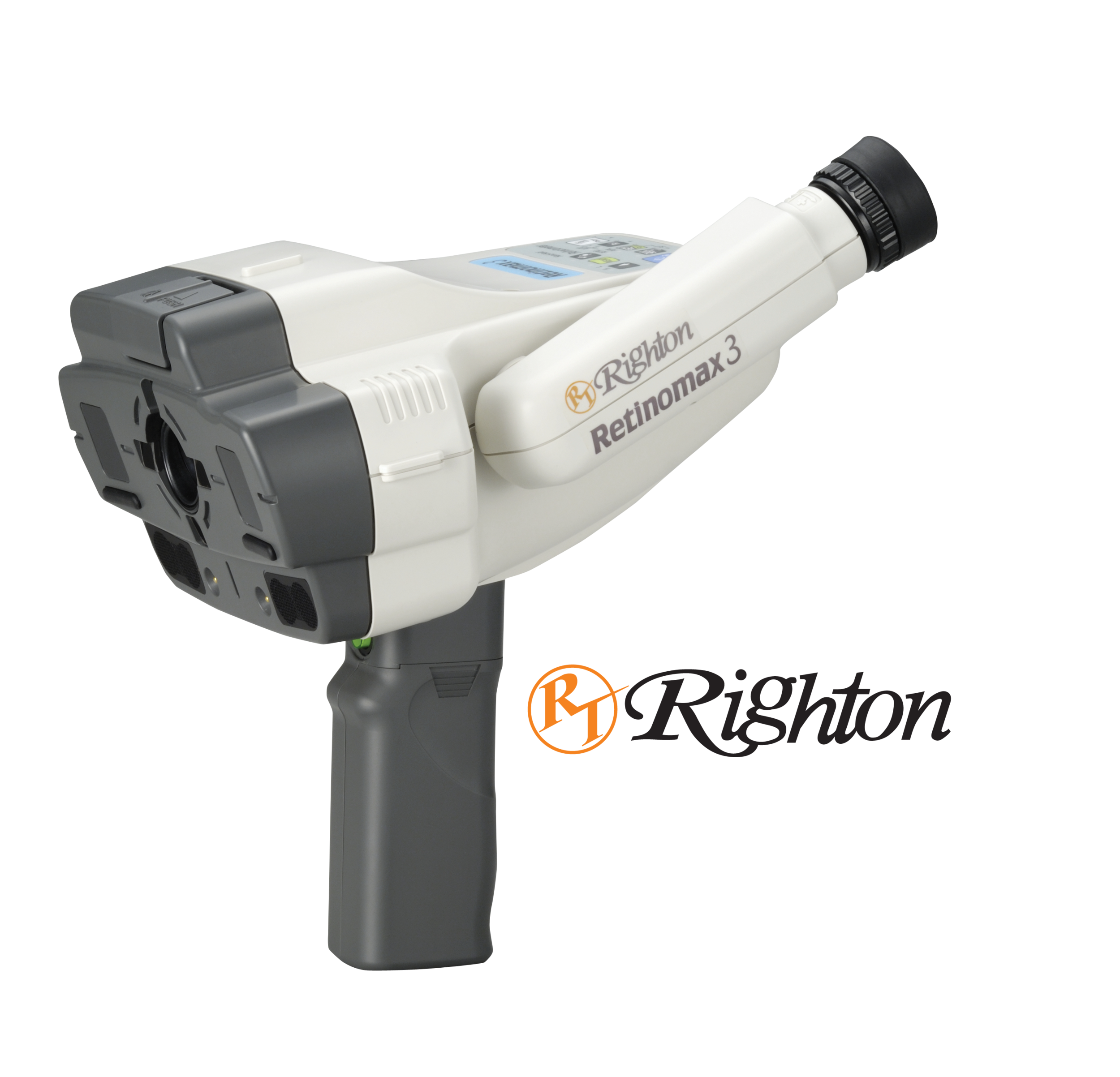
RIGHTON RETINOMAX Screen AUTO REFRACTOMETER / KERATOMETER
Accurate Autorefraction/Keratometer
New Color LCD Screen
The low-reflection, 3.5 inch monitor, featuring a tilting screen with a 100 degree seamless range of motion, new users as well as existing Retinomax users can easily adapt to Retinomax Screeen’s user-friendly design.
New Focus Assist
Informs the examiner of the optimum focusing point using the following color-coding system.
New Children's Mode
While the measurement is being taken, a melody plays continually to keep children’s attention. A constantly changing color display, both on the outside and inside target of the device, also keeps children involved during the process.
Improved battery life
At 180 minutes, the battery capacity is now twice that of conventional models. The longer battery life is beneficial when group-screening, outskirt or performing surgery.
Automatic Axis Compensation and extended measurement range
Not only does the device let the examiner know the cylinder axis angle, but it can also automatically compensate if it is not level. Measurement range has also been expanded.
RIGHTON RETINOMAX-5 AUTO REFRACTOMETER
Righton Retinomax Series 5
The Retinomax Series 5, the World’s Leading Handheld Refractor
The Retinomax 5 Series boasts all the same benefits as the 2 Series, plus an impressive collection of new features.
Lighter With Thinner Grip
Weighing just under one kilogram, the main body with battery is over 17% lighter for the K-plus 3 and 11% lighter for the Retinomax 5 than the conventional Retinomax Series models. The Retinomax Series 5’s center of gravity is in the grip, making the Series 5 feel much more lighter and balanced.
NEW Auto Quick Measurement
If no measurement is made within six seconds, the unit automatically enters Quick mode. Measurement is then taken in 0.07 seconds. In Auto Quick mode, “AQ” appears on printouts.
NEW Auto Pupil Measurement, Display, And Printout
The unit measures pupil size automatically displays the X (horizontal) size on the monitor, and prints out the XY (horizontal and vertical) sizes separately. Results can be used in checking accommodation, mydriasis, ADIE, and Horner-associated syndromes.


